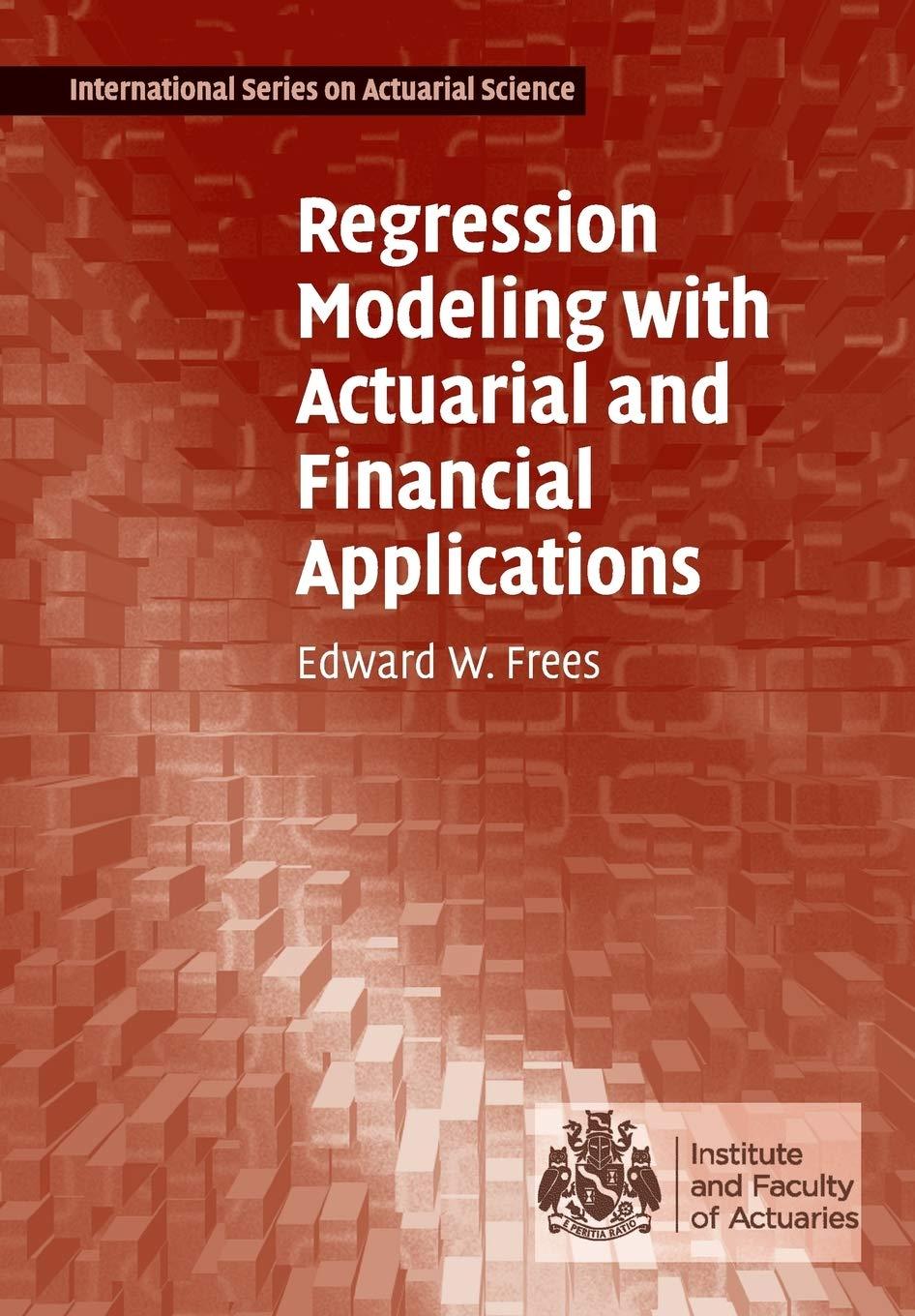Much like the medical and legal fields, members of the actuarial profession face interesting problems and are
Question:
Much like the medical and legal fields, members of the actuarial profession face interesting problems and are generally well compensated for their efforts in resolving these problems. Also like the medical and legal professions, the educational barriers to becoming an actuary are challenging, which limits entrance into the field. To advise students on whether they have the potential to meet the demands of this intellectually challenging field, Smith and Schumacher (2006) studied attributes of students in a business college. Specifically, they examined \(n=185\) freshman at Bryant University in Rhode Island who had begun their college careers in 1995-2001. The dependent variable of interest was whether they graduated with an actuarial concentration-forthese students the first step to becoming a professional actuary. Of these, 77 graduated with an actuarial concentration and the other 108 dropped the concentration (at Bryant, most transferred to other concentrations, though some left the university). Smith and Schumacher (2006) reported the effects of four early assessment mechanisms as well as GENDER, a control variable. The assessment mechanisms were PLACE\%, performance on a mathematics placement exam administered just prior to the freshman year; MSAT and VSAT, mathematics (M) and verbal (V) portions of the Scholastic Aptitude Test (SAT); and RANK, high school rank given as a proportion (with closer to one being better). Table 11.14 shows that students who eventually graduated with an actuarial concentration performed higher on these early assessment mechanisms than did actuarial dropouts. A logistic regression was fit to the data with the results reported in Table 11.14.
a. To get a sense of which variables are statistically significance, calculate \(t\)-ratios for each variable. For each variable, state whether it is statistically significant.
b. To get a sense of the relative impact of the assessment mechanisms, use the coefficients in Table 11.14 to compute estimated success probabilities for the following combination of variables. In your calculations, assume that GENDER \(=1\).
b(i). Assume PLACE \(\%=0.80, \mathrm{MSAT}=680, \mathrm{VSAT}=570\) and RANK \(=0.90\).
b(ii). Assume PLACE \(\%=0.60, \mathrm{MSAT}=680, \mathrm{VSAT}=570\) and RANK \(=0.90\).
b(iii). Assume PLACE \(\%=0.80, \mathrm{MSAT}=620, \mathrm{VSAT}=570\) and RANK \(=0.90\).
b(iv). Assume PLACE \(\%=0.80, \mathrm{MSAT}=680, \mathrm{VSAT}=540\) and RANK \(=0.90\).
\(\mathrm{b}(\mathrm{v})\). Assume \(\mathrm{PLACE} \%=0.80, \mathrm{MSAT}=680, \mathrm{VSAT}=570\) and \(\mathrm{RANK}=0.70\).
Table 11.14
Step by Step Answer:

Regression Modeling With Actuarial And Financial Applications
ISBN: 9780521135962
1st Edition
Authors: Edward W. Frees





